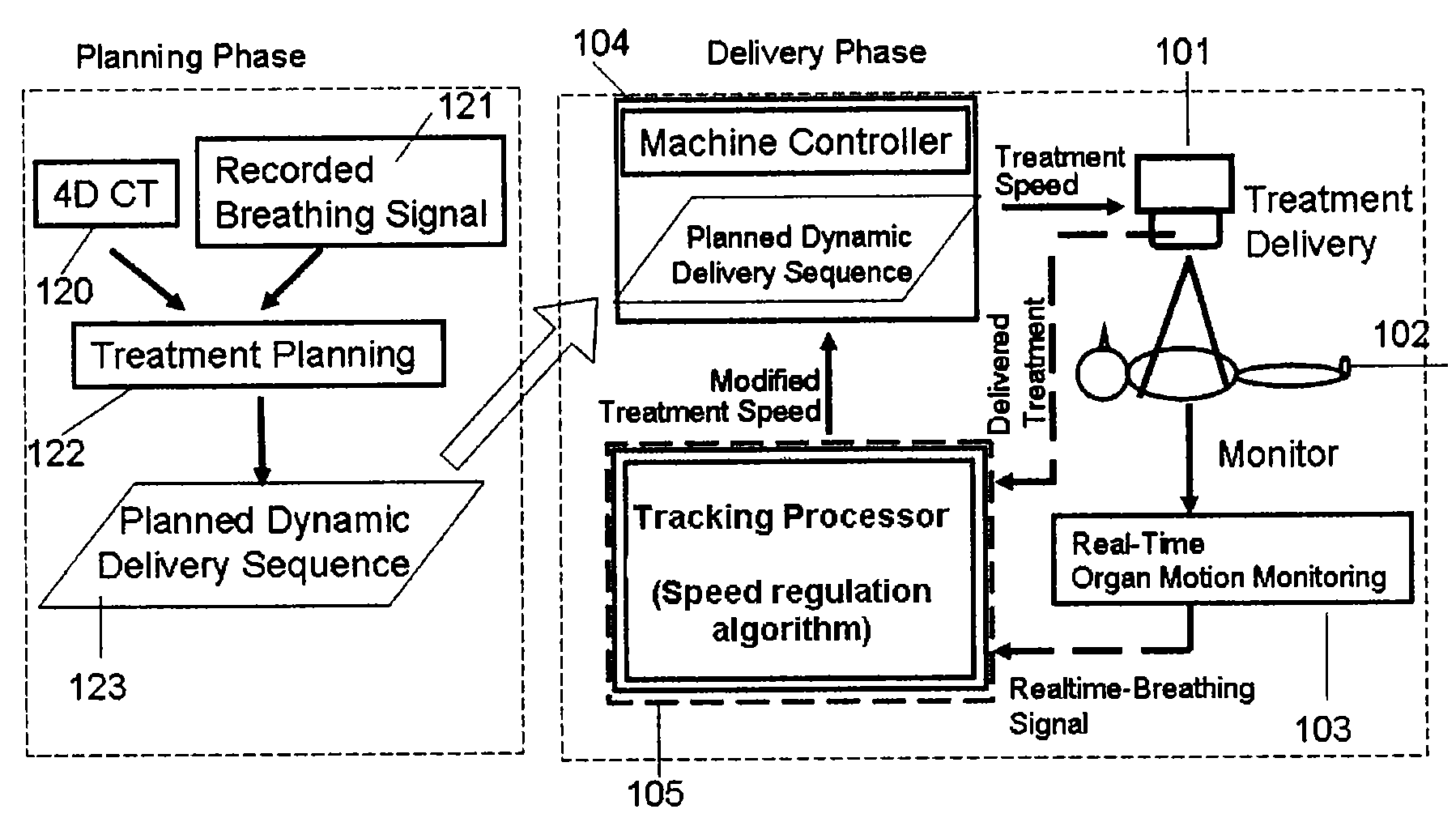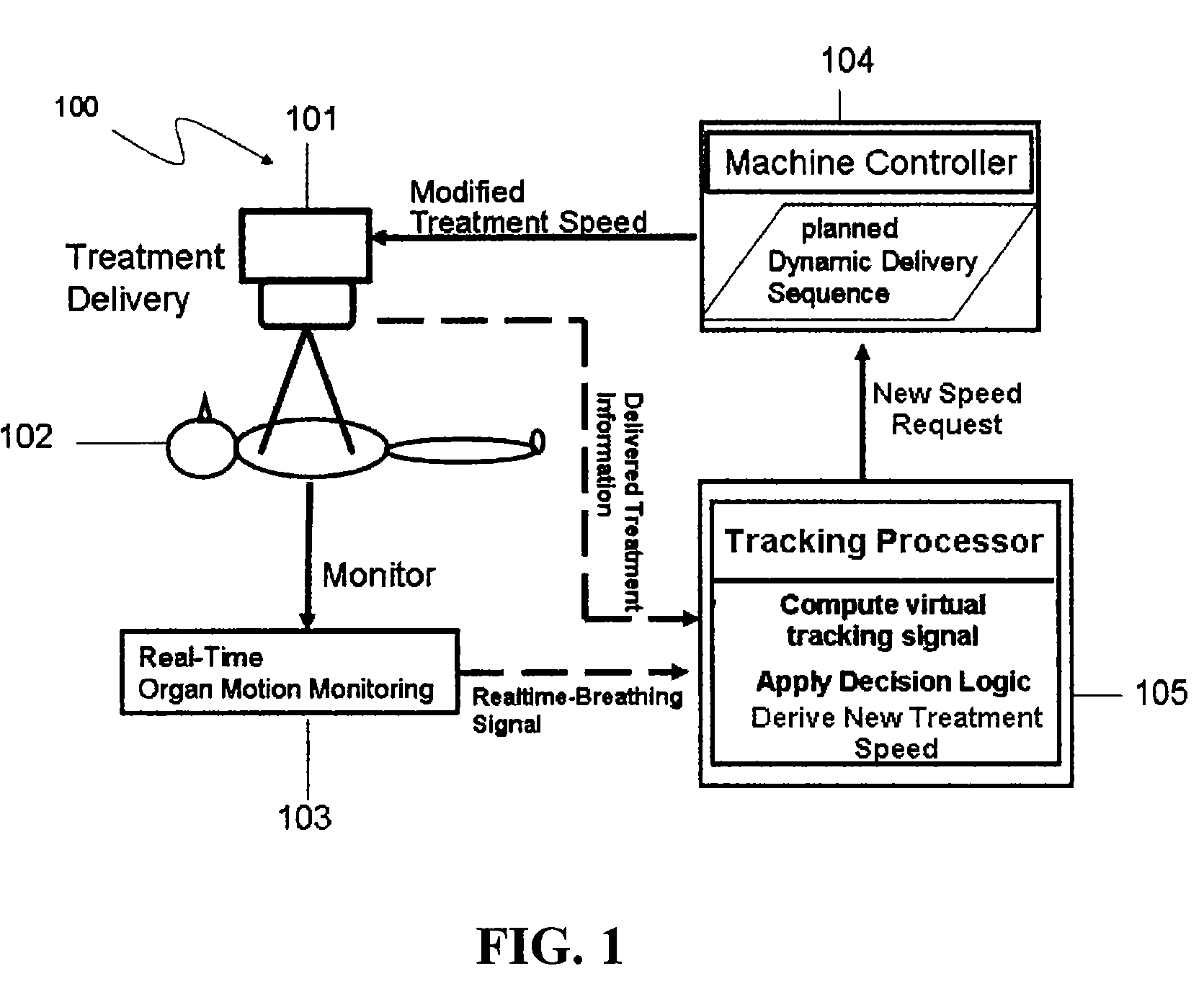Treatment-speed regulated tumor-tracking
- Summary
- Abstract
- Description
- Claims
- Application Information
AI Technical Summary
Benefits of technology
Problems solved by technology
Method used
Image
Examples
Embodiment Construction
[0034]TSR Tracking, a new tumor-tracking method, is disclosed herein. In TSR Tracking, a dynamic treatment sequence is planned to irradiate a known moving target as a function of a predetermined breathing signal. The speed at which this dynamic treatment sequence is delivered is altered in real-time according to the difference of the breathing signal measured in real-time and the breathing signal used for planning the treatment sequence. According to this invention the movement of the tumor is tracked, and real-time changes in tumor motion patterns are accommodated so that the target margin around the tumor can be minimized to reduce the toxicity to surrounding normal tissues / structures. Rather than designing the treatment plan assuming the target is stationary and tracking the tumor motion only at the time of treatment delivery, the method plans the treatment considering tumor motion and only handles the irregularities of tumor motion as the result of irregular breathing at the del...
PUM
 Login to View More
Login to View More Abstract
Description
Claims
Application Information
 Login to View More
Login to View More - R&D
- Intellectual Property
- Life Sciences
- Materials
- Tech Scout
- Unparalleled Data Quality
- Higher Quality Content
- 60% Fewer Hallucinations
Browse by: Latest US Patents, China's latest patents, Technical Efficacy Thesaurus, Application Domain, Technology Topic, Popular Technical Reports.
© 2025 PatSnap. All rights reserved.Legal|Privacy policy|Modern Slavery Act Transparency Statement|Sitemap|About US| Contact US: help@patsnap.com



